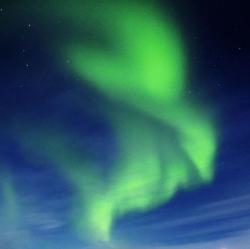
Lisa Pathfinder will test the technologies needed to detect gravitational waves, the warping of space-time produced by cataclysmic events in the cosmos. Having such a capability would make it possible to detect the merger of monster black holes, a marker for the growth of galaxies through time.
Lisa Pathfinder went into orbit on a Vega rocket from French Guiana. It lifted away from the Kourou spaceport at 01:04 local time (04:04 GMT). The satellite is being sent in the direction of the Sun, to a point some 1.5 million km from Earth. The expectation is that the European Space Agency (Esa) mission will operate for about a year.
Pathfinder contains just the single instrument, which is designed to measure and maintain a 38cm separation between two small gold-platinum blocks. These "proof masses" will be allowed to free-fall inside the spacecraft, and a laser system will then attempt to monitor their behaviour, looking for path deviations as small as a few picometres. This is well less than the diameter of an atom.
Scaled up, it is like tracking the distance between the tops of London’s Shard skyscraper and New York’s One World Trade Center, and noticing any changes down to just fractions of the width of a human hair. "We use the laser interferometer to bounce light between the proof masses and the optical structure that we built in Glasgow," says Dr Harry Ward from Glasgow University, UK.
"We then read out the phase of the laser beams as we recombine them, and motion of the proof mass translates into phase changes in the light – essentially, the light gets brighter or dimmer." While this precision performance is relatively routine in Earth labs, it is very exacting to try to demonstrate it in space.
But if Pathfinder can prove the technology, it will pave the way for an even bigger Esa mission in the 2030s that will aim to study gravitational waves.
